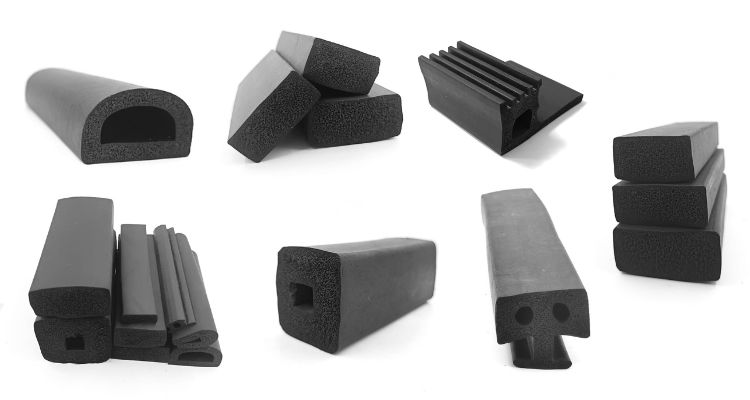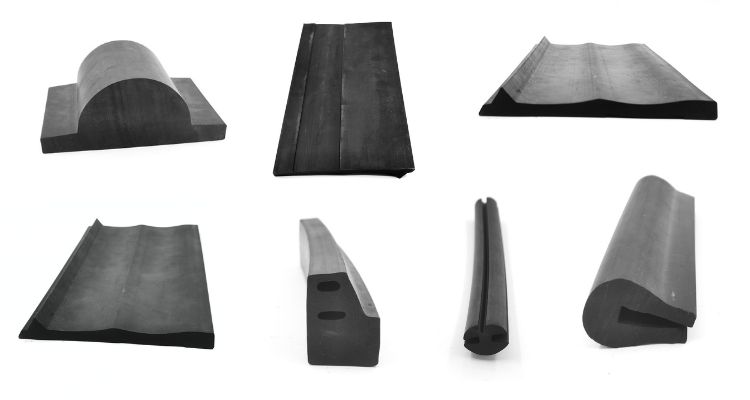What Are You Looking For?
EPDM (Ethylene Propylene Diene Monomer) rubber is a highly versatile material used in various sealing applications. However, EPDM comes in two primary forms: foam EPDM and solid EPDM. Understanding their differences in structure, properties, and applications is crucial for selecting the right material for your specific needs. Whether you're sealing doors, insulating HVAC systems, or protecting against environmental elements, choosing the appropriate EPDM material can make all the difference.

EPDM foam is a lightweight, flexible material with a cellular structure. It is available in both open-cell and closed-cell varieties, making it an excellent choice for applications requiring cushioning, insulation, and sealing. EPDM foam is known for its ability to resist weathering, ozone, and temperature extremes, making it a durable option for outdoor and industrial uses.
Flexible and Compressible: Easily conforms to surfaces for a tight seal.
Weather and UV Resistant: Performs well in harsh outdoor conditions.
Thermal and Acoustic Insulation: Helps reduce heat transfer and noise.
Lightweight: Ideal for applications where weight is a concern.
Solid EPDM, unlike foam EPDM, has a dense, non-cellular structure. This makes it stronger, more durable, and resistant to compression. It is commonly used in applications where a robust, long-lasting seal is required, such as automotive weatherstripping, industrial gaskets, and waterproofing systems.

High Durability: Withstands wear, tear, and heavy pressure.
Superior Waterproofing: Blocks water and air infiltration effectively.
Excellent Chemical and Temperature Resistance: Maintains integrity in extreme environments.
Strong Tensile Strength: Ideal for heavy-duty sealing applications.
The primary difference between EPDM foam and solid EPDM lies in their structure and performance characteristics:
| Feature | EPDM Foam | Solid EPDM |
|---|---|---|
| Structure | Cellular (open or closed) | Solid, dense |
| Flexibility | High, compressible | Moderate to low |
| Water Resistance | Good (closed-cell) | Excellent |
| Durability | Moderate | High |
| Best for | Insulation, lightweight sealing | Heavy-duty sealing, weatherproofing |
EPDM Foam is produced by mixing EPDM rubber with a foaming agent. When heated, the foaming agent creates a cellular structure, resulting in a lightweight, compressible material.
Solid EPDM is manufactured through extrusion or molding, producing a dense, non-porous material that offers superior sealing and mechanical strength.
No, EPDM foam and sponge rubber are not identical. Sponge rubber is typically softer and more flexible, while EPDM foam can be either open-cell or closed-cell. Closed-cell EPDM foam is more resistant to water absorption than sponge rubber, making it a better choice for waterproofing applications.
For sealing windows and doors, solid EPDM is usually the preferred choice because of its superior durability and resistance to compression. It provides a long-lasting, airtight seal that withstands repeated use and environmental exposure. However, EPDM foam may be suitable for applications requiring additional flexibility and insulation.
EPDM foam is widely used across different industries due to its unique properties:
Automotive: Used for vibration damping and lightweight sealing.
HVAC: Insulates ductwork and seals air gaps.
Construction: Seals gaps in buildings to improve energy efficiency.
Electronics: Provides cushioning for sensitive components.
Solid EPDM is preferred for more heavy-duty applications:
Automotive Weatherstripping: Used in door and trunk seals to prevent leaks.
Industrial Gaskets: Provides airtight and watertight sealing in machinery.
Roofing and Waterproofing: Ensures long-term protection against water infiltration.
Marine Applications: Resistant to saltwater and UV exposure.
Selecting between EPDM foam and solid EPDM depends on your application’s specific requirements. If you need a compressible, lightweight, and insulating material, EPDM foam is the better choice. If your application requires high durability, strong sealing, and resistance to environmental factors, solid EPDM is the superior option.
Understanding these differences will help you make an informed decision for your sealing and insulation needs. If you need further guidance, consult a professional to determine the best EPDM material for your project.